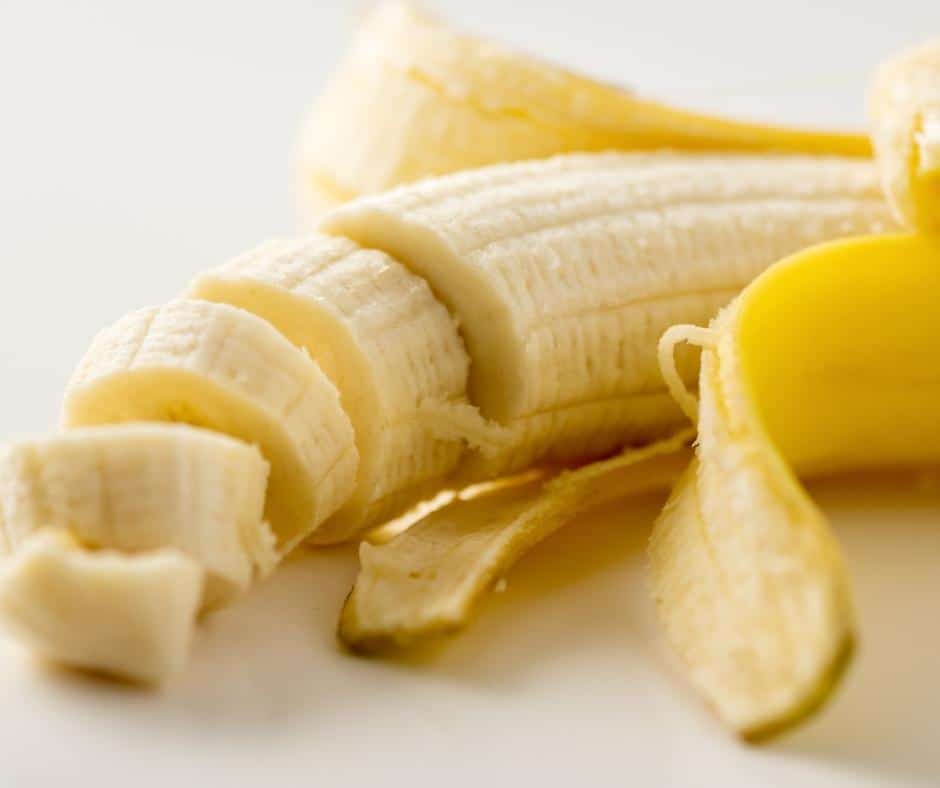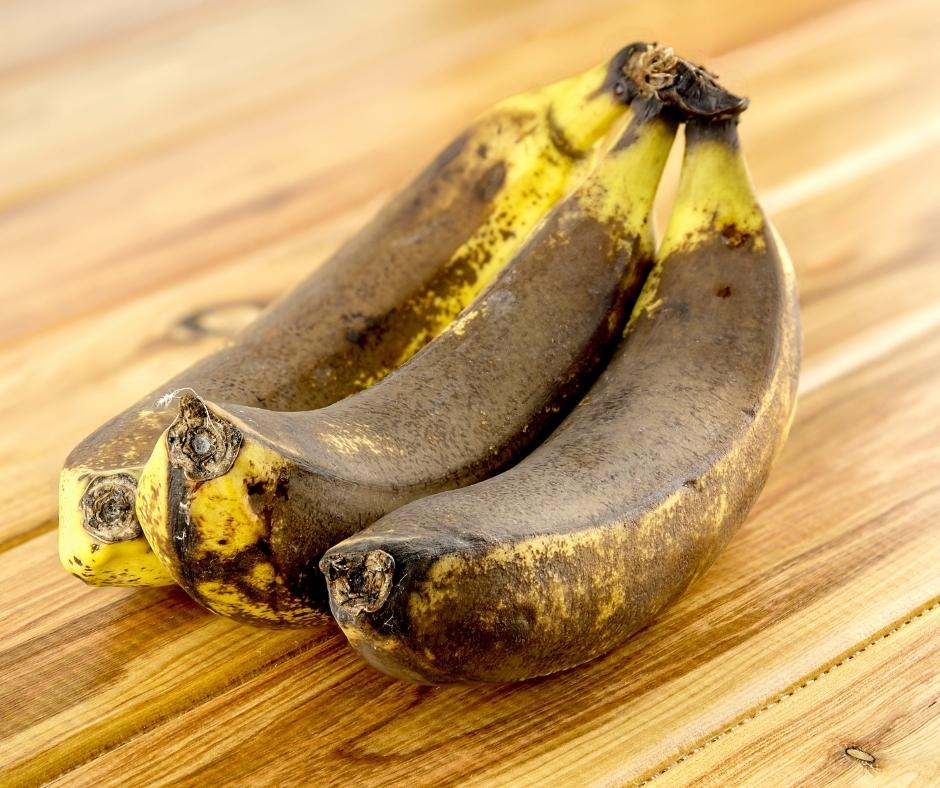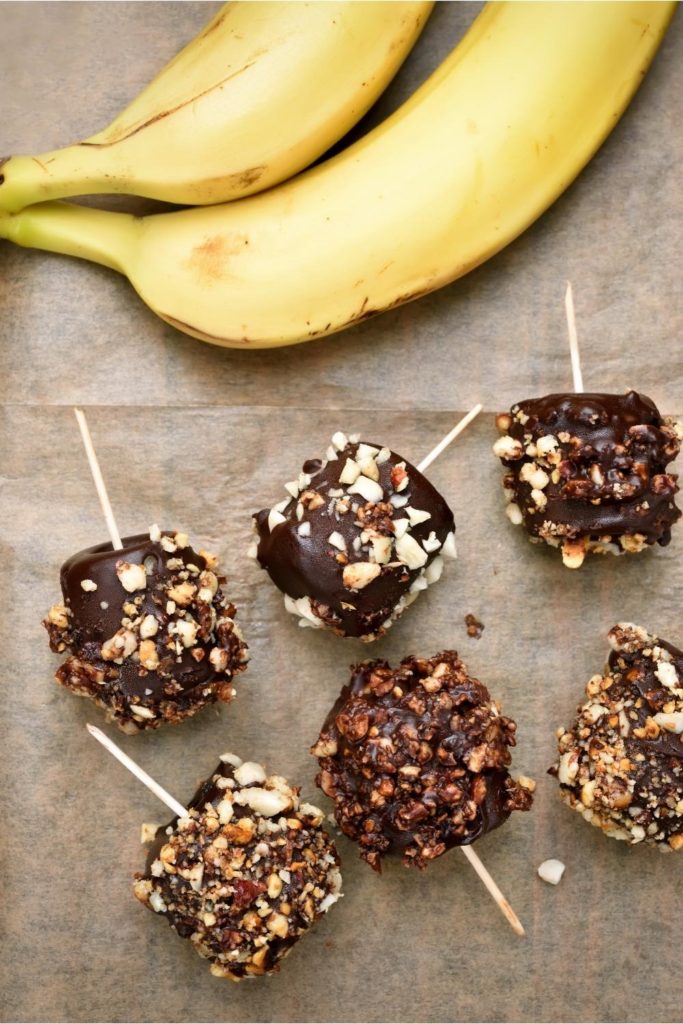Peeled bananas are not only nutritious but also popular and inexpensive. They’re well-known for their high potassium content, which makes them a fast solution for sugar cravings.
How long do bananas last in the fridge? It’s not always simple to figure out how long bananas will keep in the refrigerator. Bananas don’t have a “sell by” date like other fruits do, so determining their shelf life isn’t straightforward.
The only thing you can do to find out how long you can use them is to go by the date on which you bought the bananas.
Once you’ve brought them home, their shelf life is determined by where and how you store them as discussed below.

How Long Do Bananas Last On The Shelf?
Whole, unpeeled ones last anywhere from 3 to 5 days depending on how ripe they are.
When bananas are stored at room temperature, they deteriorate quickly. Cover them after peeling to prevent germs from getting in. Serve it right away or within an hour of peeling.
Bananas will turn brown and develop spots when they are stored at room temperature.
How Long Do Bananas Last In The Fridge?
Green, unripe bananas should not be kept in the refrigerator. They will not ripen.
Ripe, whole bananas stay crispy in a fridge’s crisper drawer even when they’re ripe.
After the banana has fully ripened, it can be stored in the refrigerator for longer. This might help your banana to survive anywhere from 5 to 7 days. When we’re talking about a banana’s life cycle, that’s an eternity.
When you put a banana in the fridge, be careful of the skin (or peel), which will become a dark brown color. Because the cold of the refrigerator inhibits ethylene (the hormone that causes bananas to ripen) in the banana, the yellow tint becomes brown. You don’t need to be concerned about this; whether or not your banana’s peel is brown, it does not affect the fruit itself. The banana’s flavor will remain unchanged.
Wrap each stem with a cling wrap or aluminum foil before putting them away.
When kept in the refrigerator, the skin will blacken after a few days. This does not imply that they are rancid. The flesh will still be firm and edible, despite the skin’s discoloration.
Bananas should be treated similarly to potatoes. Before refrigerating, slice and coat the flesh with lemon or lime juice to keep them from browning. Keep for no longer than two days after cutting.
Do Bananas Go Bad In The Fridge?
Yes, bananas that are not kept properly will go bad. Banana refrigeration may fall prey to one or more of the following problems:
- Storing bruised, extra-soft ones.
- Mixing with ethylene-producing foods can cause unexpected results.
- If you’re storing sliced or peeled bananas in the fridge, keep in mind mitigating oxidation.
How long will bananas last after they’ve been removed from the refrigerator? Bananas should be eaten as soon as possible, usually within an hour or two. The degree of temperature change affects the shelf life.

How Long Do Bananas Last In The Freezer?
Green bananas should never be frozen. Furthermore, whole, unpeeled green bananas should not be frozen.
When freezing ripe bananas,
- Remove the peels and cut the fruits.
- Pour lemon or lime juice over them and let them sit for a few minutes.
- Flash-freeze on a tray lined with wax paper.
- For storage, transfer to freezer-friendly containers or sealable bags.
Bananas that have been frozen last anywhere from three to six months.
How Long Do Bananas Last In Fruit Salad?
The shelf life of bananas is determined by the fastest spoiling substance used in a fruit salad. As a result, there is no set period for this.
Why Do Bananas Turn Black?
Bananas, like any other ripe fruit, may oxidize when left on the counter. This is due to oxidation – the introduction of air into contact with iron-containing compounds present in most fruits.
This color change is also induced by ethylene in whole, unpeeled persimmons. This is a typical occurrence during the maturation process.
How To Tell If A Banana Is Good
What’s the best way to tell if a fruit is ripe? Is there a method for determining when one is suitable to eat without getting infected by harmful bacteria or fungi?
Here are some suggestions:
- Good bananas have a pleasant smell.
- When pressed, the outer flesh of good bananas flexes somewhat yet remains firm. Avoid overripe or mushy ones.
- The skin is yellow and has tiny black or brown dots. Avoid fruit that is fully ripe and uniformly golden, but lacks markings. These are likely artificially ripened.
- The skin is easy to peel.
How Can You Make Bananas Last Longer?
- Bananas ripen fastest when they are left at room temperature. Wrap the stems with plastic cling wrap or tin foil to slow down the rate of ripening. This inhibits the formation of ethylene gas, which speeds up the process. Ripening is hastened by this gas.
- In light of this, keep green ones away from ethylene-emitting fruits like apples and tomatoes.
- Do not store them on their side. The softening and browning of that side is as a result. Instead, keep them upright.
- When storing bananas at room temperature, keep fruit flies at bay. Bananas are highly attractive to fruit flies due to their sweetness. As a result, use fly-trapping tactics or wrap the fruits loosely to keep them away.
Interesting Banana Facts
- It may surprise you to learn that bananas are regarded as berries, and they grow on plants that are considered to be herbs. They even develop on plants that people consider to be spices.
- Bananas can also help you if you’ve come into contact with poison ivy. The interior of a banana peel can be used to relieve both itching and inflammation by rubbing it on the afflicted region. These peels are sometimes utilized to treat insect stings because they possess an anti-itch effect.
How Do You Know When Bananas Are Bad?
How long do bananas stay good for? There is no set timetable for this due to storage and handling variables. They will, however, spoil at some time or another.
Here’s how to tell whether a banana is spoiled:
- Bananas will soften as they get older, and the worst ones will be mushy and soft.
- Liquid oozing from ones that have not been peeled.
- If they are left on the counter for an extended period of time, mold will grow on them. Any that have visible mold should be discarded.
- Browning of the flesh. If browning progresses into the flesh, use it as soon as possible or throw it out.
- Bananas that have shriveled and sunken. The skin will shrivel and the whole fruit will decrease in size as a result of advanced spoilage.

How to shop for bananas
It is simple to locate bananas at the grocery store. Make sure you get ones that aren’t spotted or discolored. Also, ensure they aren’t damaged in any location and don’t have mushy areas. Bananas with soft spots are edible right away if they aren’t too squishy, but after a day they will become slimy. It is better not to eat banana skins that are bruised.
If you don’t intend to eat the bananas right away, get some that are still green on the outside. When you buy bananas with green peels, they are not yet fully ripe, so they will keep longer when you bring them home.
What are some creative uses for overripe bananas?
First, remove any soft and moldy areas from the overripe bananas.
Overripe bananas are one of the most common sources of sugar, making them ideal for baking a range of sweets. The natural sweetness of the bananas blends well with many desserts, and they can be used to replace sugar in recipes like cakes, bread, and smoothies.
Banana french toast, banana pancakes, banana chocolate muffins, banana smoothies, and milkshakes are some of the most popular banana dessert recipes.
Summary
Bananas are a classic staple, and storing them is quite simple. From knowing how long they last on the counter to refrigerating and freezing them, this tropical fruit will serve you well. Despite their high perishability, utilizing the techniques mentioned in this post ensures optimum usage. Enjoy!
